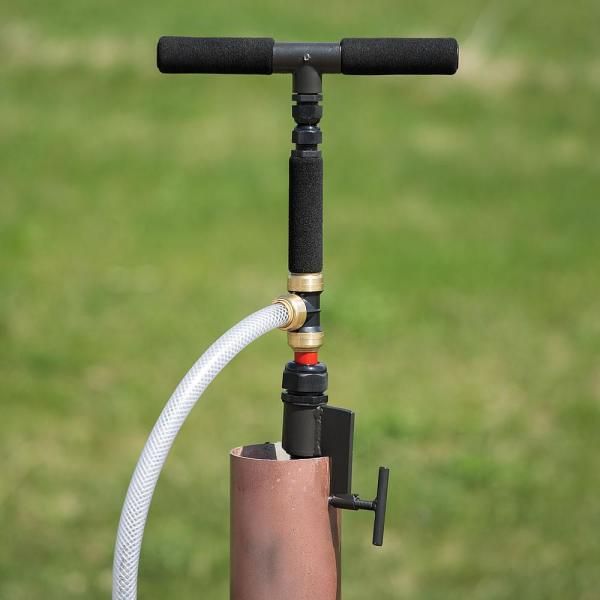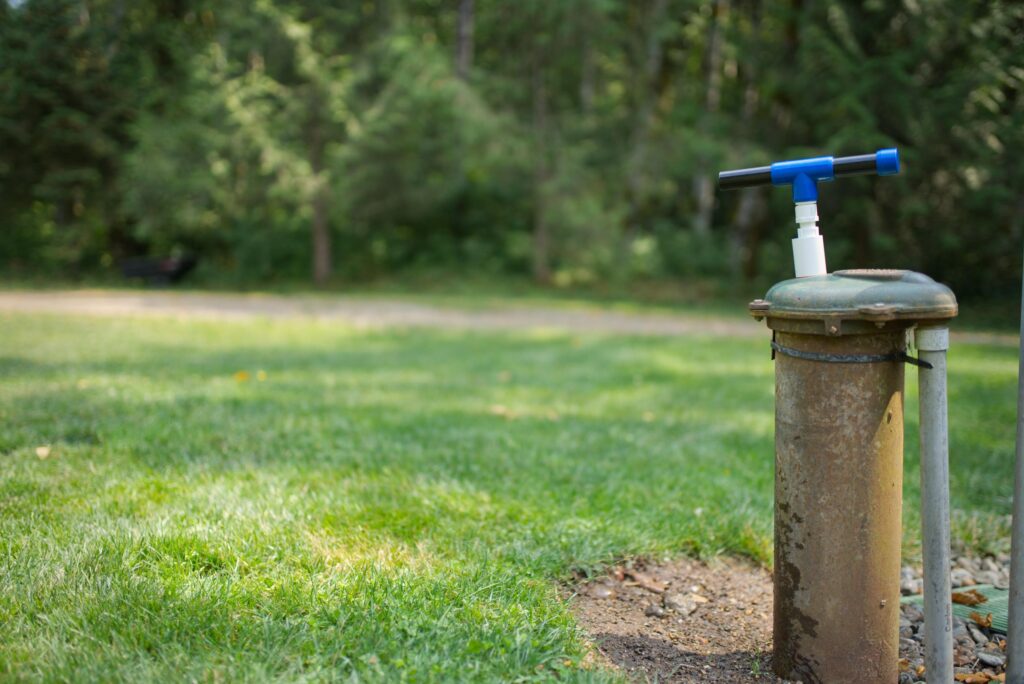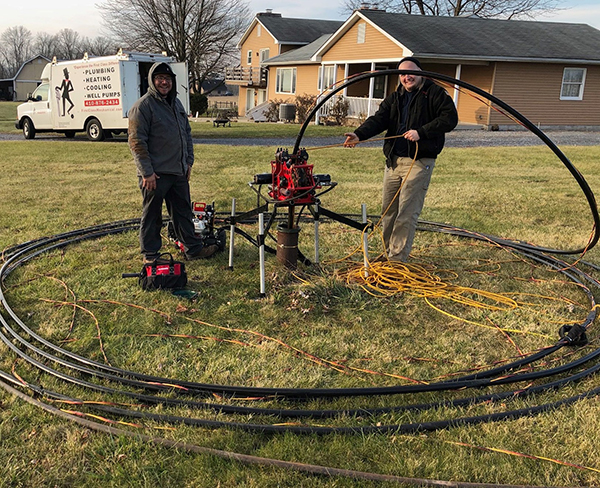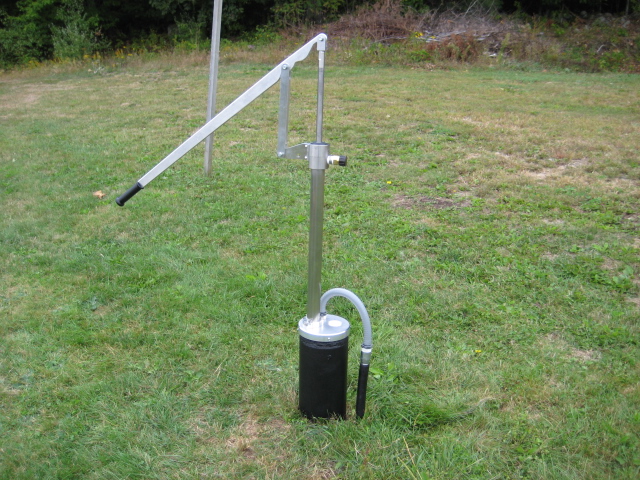Installing a well-pump system ensures your home gets access to one of life’s primary necessities, even during emergencies. While cities and suburban areas have relatively uninterrupted access to clean water from the tap, rural settlers require wells for their water supply. However, with abundant options available and the many factors to consider, it can be challenging for the everyday homeowner to choose one that perfectly meets their needs.
This article discusses everything you need to know about well pumps, their different types, and the considerations for selecting the best one for your home.
Basics of well pump

source: pinterest.com
Before diving into the types of well pumps and deciding which one suits your needs, it helps to revisit the mechanics of how they work.
In its basic form, a well pump pushes water from the well into a storage tank. When the well pump motor is triggered, it draws water into the pump before moving it to the surface into a pressure tank. This process increases the air pressure in the tank until it reaches the preset level of around 40 to 60 pounds per square inch (psi).
When you turn on the tap, this decreases the air pressure in the tank, which pushes water through your plumbing. When the air pressure drops to the preset level, usually 40 psi, the pump turns back on, repeating the process of driving water into the storage tank.
Types of well pumps
The type of well pump your property requires depends primarily on how low the water table is in your area. In many United States regions, including rural areas, the water table sits a few feet below the ground, making it easier to access potable water supply. Meanwhile, areas with lower water tables require deeper wells and more sophisticated well pumps.
With that said, below are the most common types of well pumps.
Hand pumps

source: pinterest.com
You can have the most sophisticated well-pump system, but when disasters strike, and the grid goes black, hand pumps ensure you have access to clean water even when the power’s out. Whichever system you choose for your property, having a well-water hand pump as a backup system is always a good idea.
For example, EPP Well Solutions emergency hand pumps offer various solutions for the utmost peace of mind. Whether you live in the suburbs or more rural settings, an emergency hand pump system is a worthy investment that offers returns as soon as you need it.
Centrifugal pumps
This type of pump is a common choice for those with wells shallower than 25 feet. Centrifugal pumps use internal fans to create suction and draw water into storage tanks. They’re installed above ground and housed next to the well, making it easier to perform maintenance work. And while centrifugal pumps are usually the most affordable, they don’t have sufficient power for deep well use.
Submersible well pumps
Conversely, submersible pumps are versatile water supply solutions for shallow and deep wells. Also referred to as deep well pumps, these are submerged underwater inside the well. These submersible pumps are ideal for wells 90 to 300 feet below the ground. As you can imagine, deep well pumps require more complex installation.
There are two primary types of submersible pumps: two-wire and three-wire pumps. The former has built-in controls, while the latter require a different control box. While the former is usually easier to install, it has to be brought up to ground level for maintenance and repairs.
However, compared to centrifugal and other above-ground well pumps, submersible pumps usually encounter fewer mechanical problems as they pull water from a well differently. Submersible pumps are known for reliability, often taking up to 25 years before requiring servicing.
Because submersibles operate submerged for years, correct sizing and professional installation have a major impact on that longevity. Local soil conditions, well depth and water quality affect component choice and sealing, so homeowners should consult experienced technicians who can assess site specifics and recommend the appropriate submersible well pump. Proper setup — including compliant wiring, check valves and pressure settings — helps reduce cavitation and premature wear. Technicians can also outline routine maintenance and early warning signs, helping owners avoid unexpected failures.
Convertible jet pumps
These types of pumps are ideal for wells that don’t have a consistent water table. There are convertible jet pumps with shallow nozzles for wells shallower than 25 feet and deeper ones capable of drawing water from wells up to 110 feet deep.
There are two primary jet pump systems: single and double drop. Ideal for shallow well pumps, single drop jet pumps sit above ground, drawing water through a single inlet pipe. Conversely, double-drop jet pumps use two pipes, one to draw water from the well and the other to push it upward. These are capable of extracting water from depths of up to 110 feet.
What type of well pump do you need?

source: pinterest.com
It’s easy to get overwhelmed and experience choice paralysis once you dive deep into the catalog of well-pump suppliers. And that’s before considering the other ways pumps are used in the home. Fortunately, there’s a simpler approach. Below are the primary factors you need to consider.
- Property size
- Water consumption
- Number of plumbing fixtures
- Well depth
Well pumps come with ratings measured through gallons per minute (GPM). A four-bedroom home requires around 8 – 12 GPM. To simplify this, allow one GPM for each water fixture, such as faucets, toilets, showers, dishwashers, laundry machines, etc.
Remember, while you need a pump powerful enough for your home’s requirements, getting an oversized unit only results in energy inefficiencies and suboptimal performance. As such, if you’re replacing your well pump, choose one with similar horsepower. You can find this information on the pump’s identification plate.
Well-depth is another critical factor in finding the right pump for your property, as this dictates how far water must travel to reach the surface. You can use the following as a general guide:
- Shallow-well jet pumps are ideal for wells less than 25 feet deep
- Deep-well jet pumps for wells between 25 and 110 feet
- Submersible pumps for wells between 110 and 400 feet
You can find your well depth in the well-driller report. You can use this simple hack if you don’t have access to this. Tie a fishing bobber to a long string and lower it down the well until you feel it is floating. Mark that point to measure your well-depth.
Frequently asked questions

source: pinterest.com
Now that you better understand well pumps, below are frequently asked questions.
How much do well pumps cost?
On average, replacing a well pump costs USD$1,600. Depending on the factors mentioned above (type, size, well depth, etc.), a well pump can cost between USD$400 and USD$4,000.
Breaking this down further, below are the estimated costs for specific well pumps:
- Hand pumps: Starts at USD$150
- Jet pumps: USD$300 to USD$800
- Submersible well pump: USD$250 to USD$1,200
- Solar well pump: USD$2,000 to USD$4,000
In addition, expect to shell out another USD$250 to USD$500 for labor and another USD$200 to USD$400 for other materials like pipes and wires.
How long do well pumps last?
Well pumps can generally last between eight to 25 years, depending on their quality, mechanical complexity, water quality, and use. Below are other factors contributing to a well pump’s life expectancy:
Duty cycle: A pump that has intermittent duty cycle will last longer than those with continuous use.
Motor size and quality: A pump with a larger motor (over one horsepower) generally lasts longer than a smaller one, as there’s less pressure on a larger engine. In addition, the quality of motor bearings and lubrication systems contribute to a well pump’s longevity and reliability.
Water sediment: The abrasive nature of water deposits adds wear to well pump bearings. This includes contaminants like algae, sand, and silt. As such, while a submersible pump has an average life expectancy of 15 years, high-sediment water can lower this significantly.
Installation quality: Proper installation is critical to a well pump’s life span. This entails securing the proper location for components, like fitlers, check valves, and wires.
Cavitation: This refers to air or gas getting into pump chambers and impellers, causing them to overheat. When this happens frequently, it can lead to mechanical damage to a well pump’s moving parts. This is why matching a pump’s capacity with its expected yield is critical.
If you watch for these factors, you’ll get a good investment return on your well pump before its first service.
What type of pump is needed?

source: pinterest.com
Single-drop jet pumps are ideal for wells less than 25 feet deep. These pumps feature one-way check valves, keeping the pumps primed. In addition, the mechanical simplicity of this type of pump makes it cheaper to maintain and repair.
There are above-ground deep-well jet pumps for deeper wells that can draw water up to 110 feet deep. They’re also easier to service. Meanwhile, wells over 110 feet below ground require submersible pumps.
Remember that while above-ground well pumps are easier to maintain and service, submersible pumps tend to have fewer mechanical issues as they don’t lose prime like their counterparts. Cavitation also isn’t an issue for submersible pumps.
Final words
A well-pump system protects your property from fortuitous events and other potential emergencies, ensuring you and your loved ones have a sufficient water supply. In this regard, the information above should help navigate the complex world of well pumps. However, it’s still best to consult a professional to ensure you have the right capacity for your requirements. A professional can bring all the considerations you should make to the fore, helping you make the most out of your investment.


